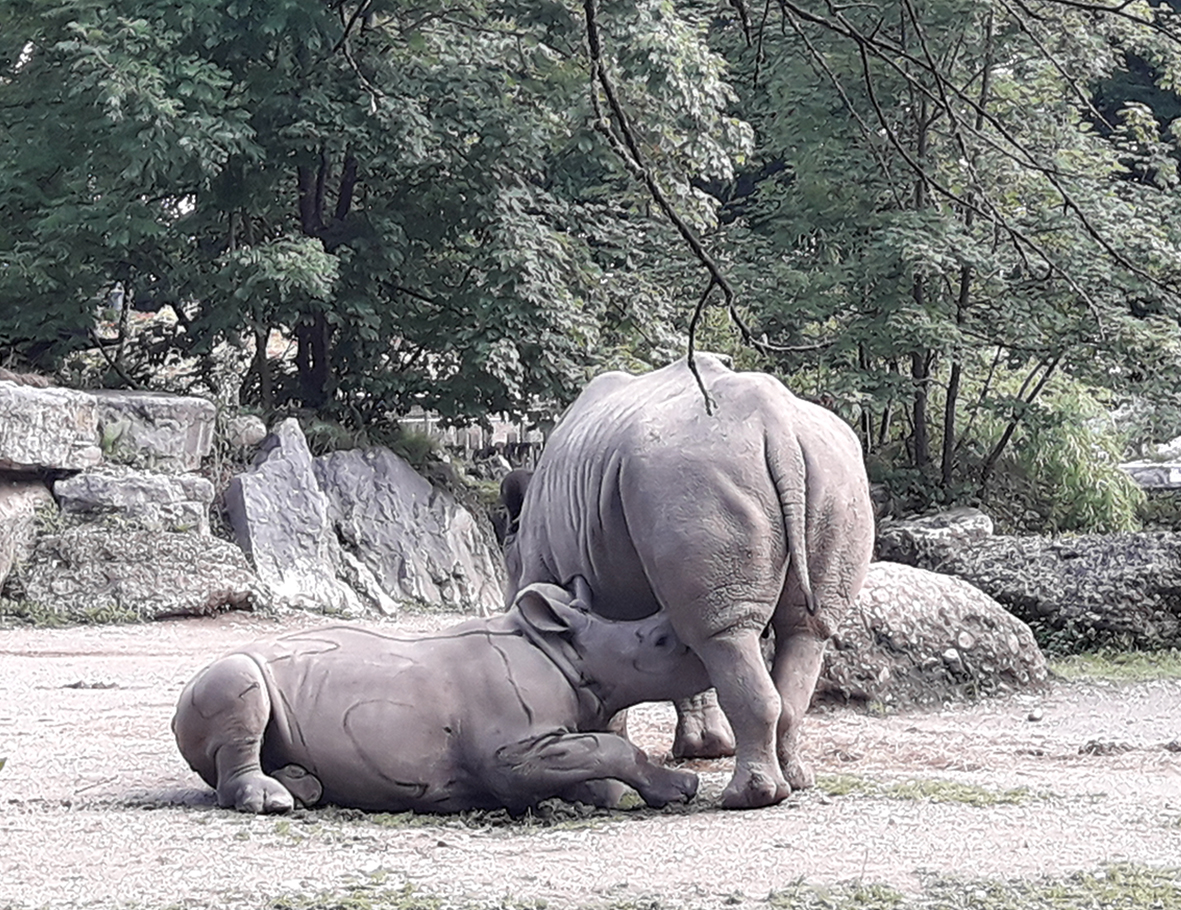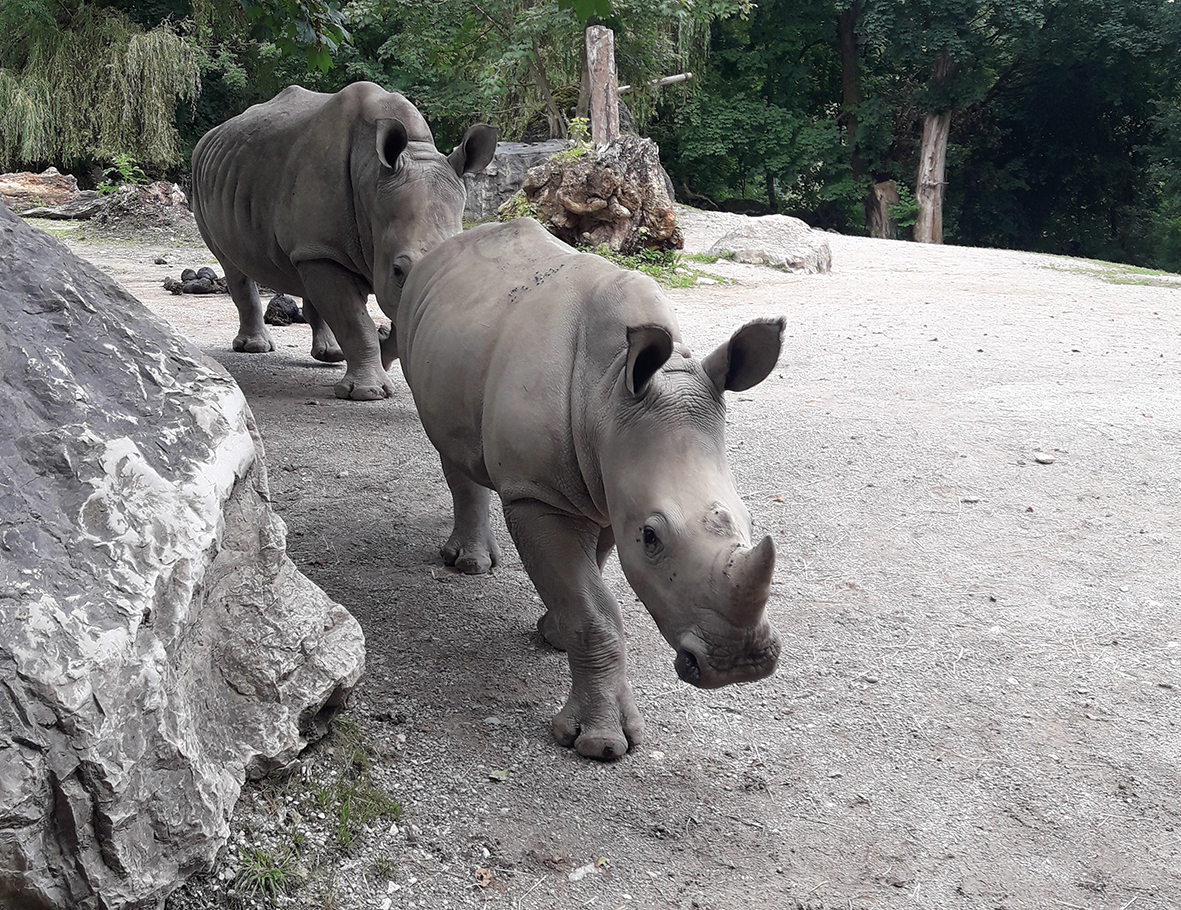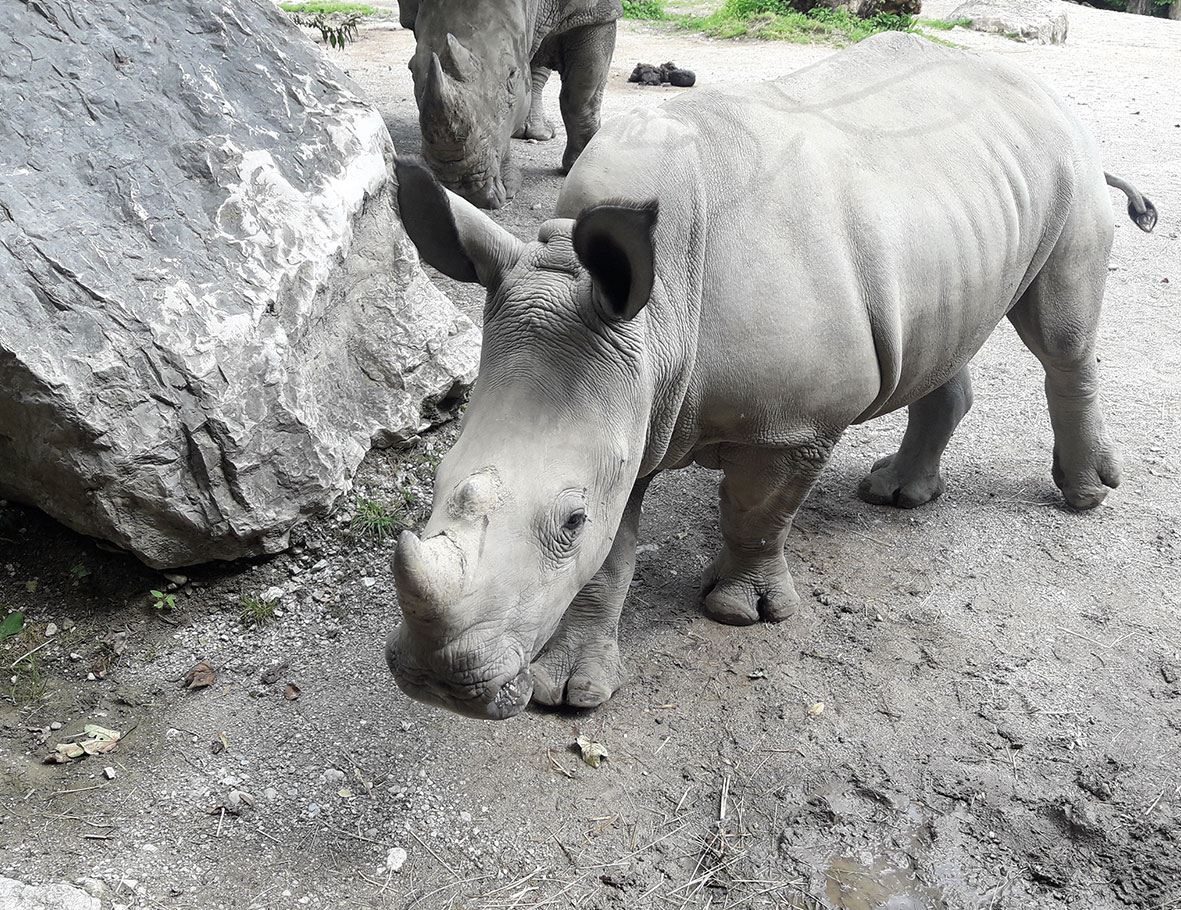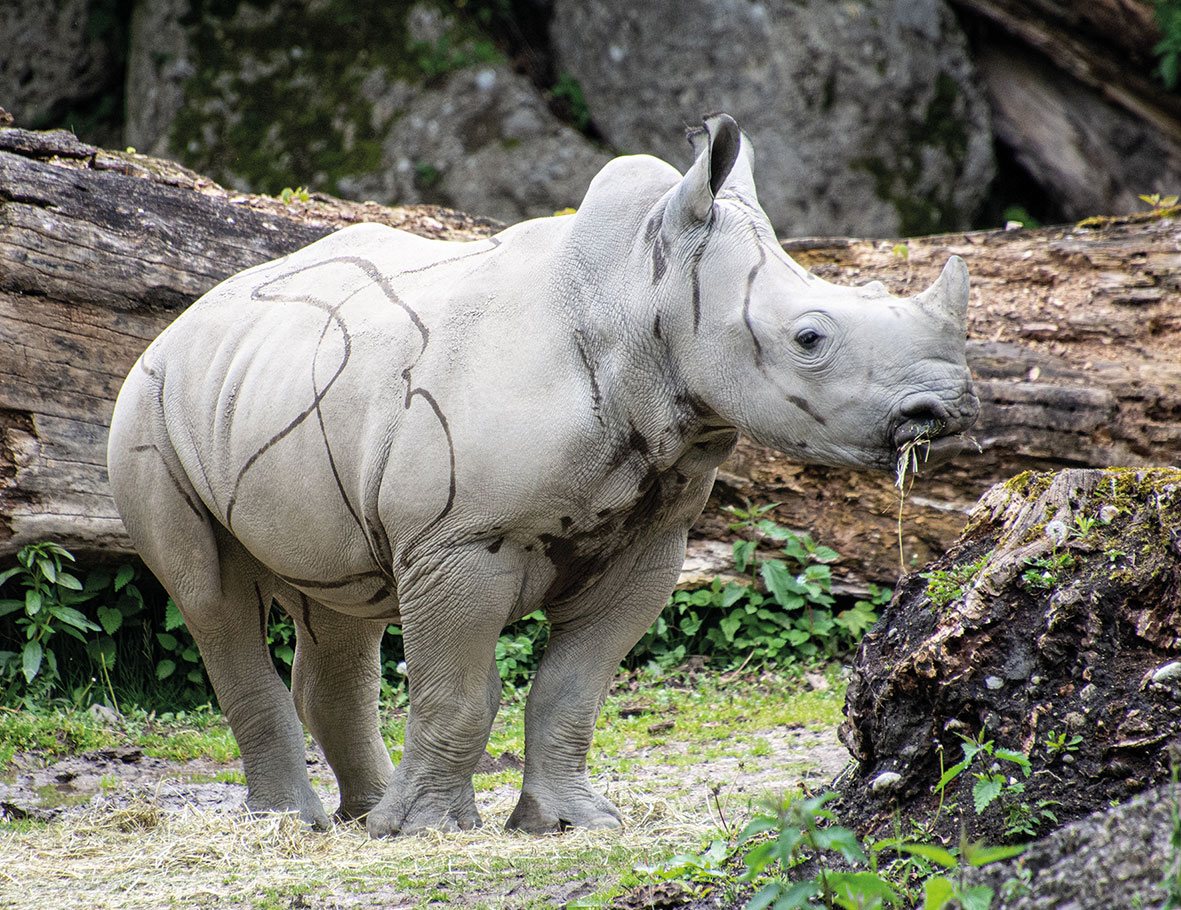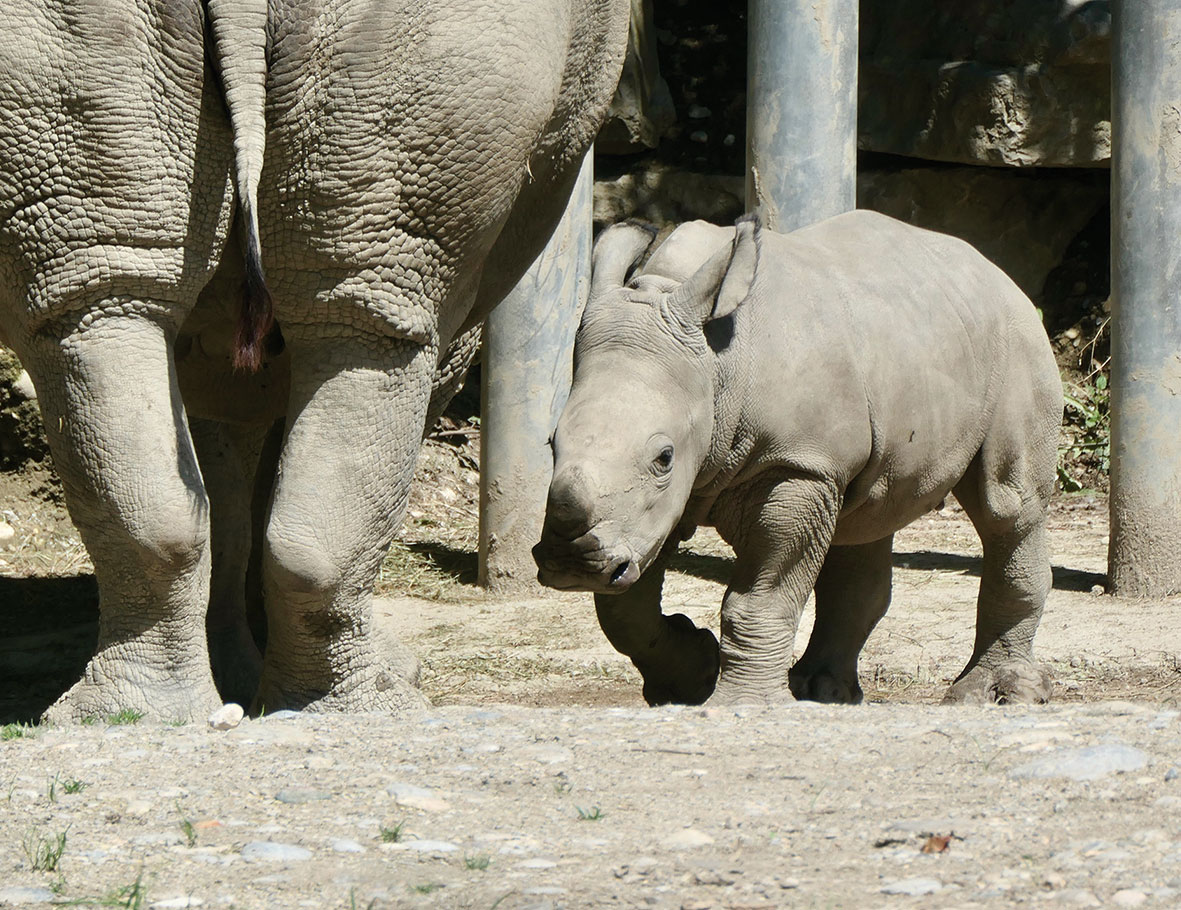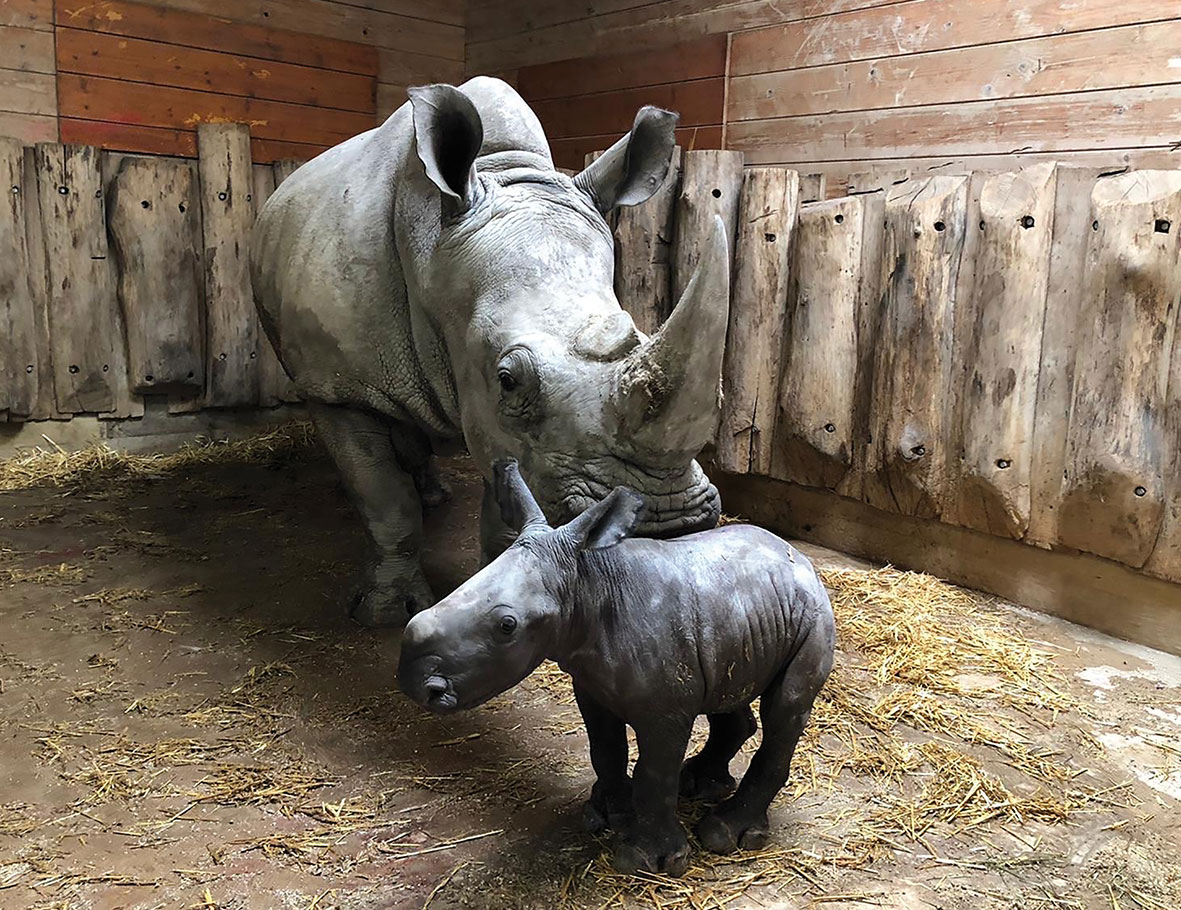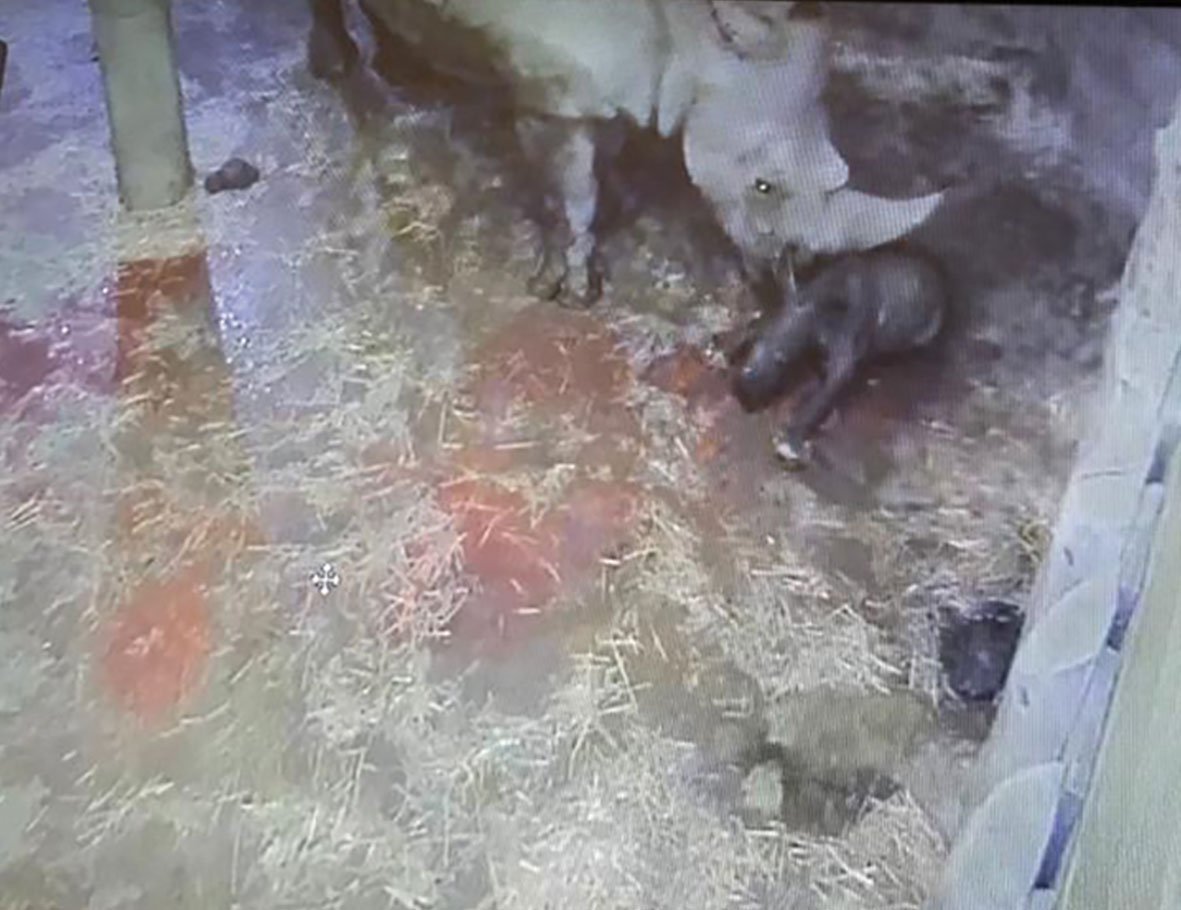Salzburg | Berlin | Africa
Rescuing Giants: Tamika is Growing and Flourishing
The Academy could not have imagined a more wonderful present last year for its 10-year commemoration: The birth of the third rhinoceros calf in the Salzburg Zoo. Without the help of the Academy and science, this young female animal would not be alive.
Fifteen-year-old white rhinoceros cow Tamu gave birth to the healthy calf Tamika on June 3, 2020.
Dr. Miriam Wiesner, zoo veterinarian and zoological curator of the Salzburg Zoo, also member of the Academy’s
advisory board, reports on Tamika’s development:
“It is a joy to watch the little rhinoceros Tamika grow. At more than one year old, she is so big, that she can comfortably lie next to her Mama while she nurses. How overwhelming to directly experience everything from artificial insemination to birth preparations, to the actual birth, and now see her growth as a young calf.
Tamika’s development is fascinating to watch: Sometimes she is round as a ball, then she suddenly has a growth spurt and develops long legs. We are so proud of mother cow Tamu and the third rhinoceros calf in our zoo. Compared to the two bull calves raised in the Salzburg Zoo, from the very beginning Tamika was cheekier, bolder, and not at all shy. When she wants attention, she calls out in a typical rhinoceros call – persistently. She also gallops around the outer enclosure like a little racehorse and, with her miniature horn, tries to engage her rhinoceros aunt Yeti to
a fight. She is very trusting of the animal keepers, enjoys being petted and tickled over her whole body and curls her little tail in the air. You must be careful that she doesn’t stamp on your feet out of pure joy. Luckily, I’ve never had to treat Tamika. She is a strong and healthy young rhinoceros.
Sabine Grebner, director of the Salzburg Zoo, is thrilled and grateful for the Academy’s support of this project: “Every day is a delight when I see how little Tamika is thriving. We are very proud that with this project, our zoo is making a significant contribution to the preservation of the Southern white rhinoceros and we will continue to be strongly involved:”
Previous history:
Even under the protected conditions of a zoo, it is extremely difficult to practice conservation breeding with a species like the rhinoceros. Just how difficult it is shows the story which began at the Salzburg Zoo in 2013. Thanks to his decades of experience as the zoo veterinarian and director of the Munich Hellabrunn Zoo, Prof. Dr. Henning Wiesner was asked at the time by the Salzburg Zoo director Sabine Grebner to lead the scientific, zoological and veterinary consultation in Salzburg. One of the issues was the lack of young among the zoo’s Southern white rhinos. The problem was that the bull Athos showed no interest whatsoever in his conspecifics.
Wiesner advised artificial insemination and cooperation with the internationally renowned Leibniz Institute for Zoo and Wild Animal Research (IZW) in Berlin, changed feeding and husbandry practices and prescribed special phytotherapy to stimulate the male and female gonads. With success: In this way the Salzburg Zoo got two calves which have developed wonderfully and are now expected to produce offspring in another zoo.
In December 2017, the rhinoceros cows, Yeti and Tamu, could be inseminated again, but in vain. The insemination with the sperm of the bull Athos was successful only on January 17, 2019. About one month later, an ultrasound examination conducted by the IZW showed that at least Tamu was pregnant.
Currently, five rhinoceros subspecies still exist.Here are the most recent statistics: There are approximately 10,000 white rhinoceroses worldwide, according to the IUCN (International Union for Conservation of Nature) and about 1,800 black rhinoceroses. Indian rhinoceroses are at never more than 2,000, Sumatran rhinoceroses are at 30 and the Java rhinoceroses never count more than 60 individuals. In Africa in particular, rhinoceroses are victims of poachers. Trade with rhinoceros horns has officially been illegal for nearly four decades. However, because they are considered to possess healing and aphrodisiacal properties, especially in China and Vietnam, horrendous prices are still paid for the horns of these animals on the black market. For this reason, specific breeding programmes are in progress to protect the species in zoos like the Salzburg Zoo. The Frankfurt Zoological Society is involved in the protection and monitoring of the remaining animals of this species in the Serengeti in Tanzania. The Academy assists in this endeavor. The Academy also works with the NGO Kilimanjaro Animal C.R.E.W. to care for orphaned or injured animals in the wild, including rhinoceros calves which are pepped up again with a special milk substitute developed by the Academy. |

